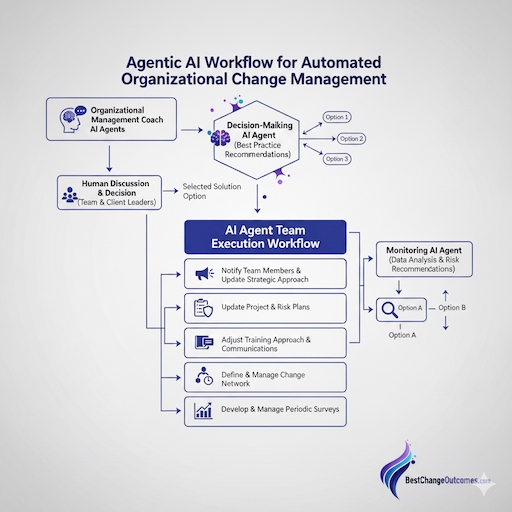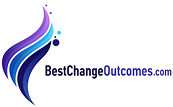Written by Dr. Paul Thomason
As organizations increasingly adopt Generative AI tools, a significant challenge has emerged: a lack of employee trust, leading to low adoption rates and limited return on investment (ROI). Research from Deloitte highlights that the key to overcoming this hurdle lies in actively building trust. T
he concept of nurturing and leveraging trust is not new of course, Trust: The Winning Formula for Digital Leaders – A practical guide for companies engaged in digital transformation provides an outstanding breakdown of the value of earning and instilling trust for optimal results.
Integrating Generative AI tools into change management practices and focusing on four core factors—Humanity, Capability, Transparency, and Reliability— can drastically help accelerate technology adoption across a host of digital transformations and foster stronger, more loyal relationships with their employees along the way. In addition, Agentic AI holds the key to embedding the change management process landscape with smart tools to guide the work, and the potential to help to coach junior change managers, and more senior change leaders.
In this article, I start by exploring the four pillars of trust – which is focused on AI adoption within the current employee landscape, and discuss ways to mitigate the anxiety and confusion by leveraging these pillars. I’ll continue by showcase some of the ways AI is currently being leveraged within change management processes today.
The Four Pillars of Trust in Technology Adoption
A Deloitte pilot program outlined in the January 2025 HBR article, If You Want Your Team to Use Gen AI, Focus on Trust, found significant improvements in adoption and usage, and demonstrated that trust is not a single concept but is built on four interconnected pillars. Leveraging AI to address each of these pillars directly is essential for a change to be successful.
1. Humanity: Fostering Empathetic Adoption
Change can be unsettling for employees, and a human-centric approach is vital. AI tools can be leveraged to demonstrate empathy and fairness by providing personalized, on-demand support. For example, an AI-powered assistant can offer customized training modules tailored to an employee’s specific role and learning style, rather than a one-size-fits-all approach. This personalized experience makes the change feel less like a mandate and more like a supportive journey, helping employees feel seen and valued.
2. Capability: Empowering Employees to Deliver
Trust is earned when a tool proves its worth. Capability refers to a technology’s ability to effectively deliver on its promises. A key strategy is to embed the AI tool directly into existing workflows to showcase its immediate value. By providing AI assistants that automate tedious tasks, summarize long documents, or generate initial drafts, companies can quickly demonstrate the tool’s power and effectiveness. The 65% increase in repeated tool use seen in the Deloitte pilot is a testament to this approach—employees who experienced the tool’s capability firsthand were eager to use it again.
3. Transparency: Building Open Communication
Transparency is about open communication and sharing information, giving employees the clarity they need to make informed choices. AI can be a powerful channel for this. Instead of static, infrequent updates, an AI communication platform can provide real-time, straightforward answers to employee questions about a new process or service. This includes explaining the rationale behind a change and the expected benefits, which helps address skepticism and builds confidence. The 52% increase in perceptions of the tool’s transparency in the Deloitte study underscores the importance of this open dialogue.
4. Reliability: Delivering on Promises Consistently
Reliability is the consistent ability of a tool to meet expectations and deliver on promises. In a change management context, this means the technology must be dependable and free of major disruptions. Organizations can use AI to monitor system performance, predict potential issues before they cause problems, and ensure a seamless user experience. By delivering consistent, reliable performance, the AI tool itself becomes a symbol of trust. This continuous dependability, which led to a 49% rise in perceived reliability in the pilot, solidifies employee confidence and encourages long-term adoption.
Let’s now look at some of the more practicals ways in which AI is being used by Change Managers on the ground working through Digital Transformations today. Having used these approaches within client engagements, I can verify they work surprisingly well. In most cases, they aren’t difficult to implement either.
Practical Examples of AI in Change Management
- Personalized Learning Journeys:
- AI can analyze an employee’s role and skill set to create a personalized training path for a new software launch. Instead of a generic 50-slide presentation, a customer service representative might receive a short video on the new ticketing system and a quiz, while a developer receives a deeper dive into the API documentation.
- Predictive Sentiment Analysis:
- AI can analyze internal communications (like Slack channels or company forums) during a change to gauge employee sentiment in real-time. If negative sentiment spikes around a specific feature of a new process, leaders can proactively address the concern with targeted communication.
- Automated Q&A and Support:
- An AI chatbot can be deployed as the first line of support during a transition. It can provide instant answers to frequently asked questions about a new policy or system, freeing up human change management teams to handle more complex issues and provide more personal support when needed.
- Workflow Integration:
- Instead of employees having to switch to a new tool, AI can be integrated into their current platforms. For example, an AI assistant could be added to an existing CRM to automatically generate call summaries after a client meeting, showcasing the tool’s value without requiring a major behavioral change.
- Targeted Communications:
- An AI prompt might seek insights for the appropriate messaging to yield a particular response from recipients – such greater adoption or a specific call to action (sign up or volunteer as a change champion, for example). Gen AI can help find a best practice approach for a given technology implementation journey, and to yield the right set of messages for the particular organization. This works across all types of communication, in-person, written communications, webinars and even town hall meetings – the right message, at the right time, to the right audience segment can be the difference between success and failure for any given project that impacts your workforce.
- AI Tools for the Future:
- Imagine using an AI tool to coach your change managers on the implications of certain actions. Or as a means to help solve a particular problem encountered along the change journey. We’re not far from that day. I envision a time when we leverage Agentic AI to deliver just that capability – and have drafted a workflow to just that end. See Fig 1. below.

Concluding Remarks
Change managers Integrating AI into change management processes are finding AI can be a powerful strategic and tactical tool for accelerating adoption. Artificial IntelligenceI can be used – not just as a tool, but as a partner in building trust. As more enhancements for change management through AI becomes available, the benefits of being able to creatively adapt to and use AI capabilities will no doubt proliferate. The future is coming, and we can’t stop it.
By focusing on the four pillars of trust—Humanity, Capability, Transparency, and Reliability—organizations can transform the challenge of technological change into an opportunity for growth and enhanced employee loyalty. As the Deloitte pilot demonstrated, this intentional, trust-based approach doesn’t just drive adoption and tool usage; it builds a foundation for a more engaged and empowered workforce.
Leveraging AI within the change process itself isn’t really a nice-to-have option any more – it’s a necessary means to embellish the discipline and capabilities of the change manager. Utilizing the four pillars of trust (and the references provided) can drastically improve the chances of success within a digital transformation project, internal adoption of productivity tools, and enhance the wider organizational culture in the process.
I hope this article was helpful, and I warmly encourage you to reach out with your comments and observations paul@bestchangeoutcomes.com
Paul Thomason

